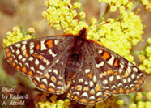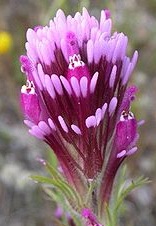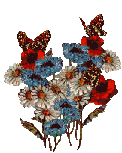- Search site
- A sense of place
- Airs
- Are you in my class?
- Art
- Articles
- Authors
- Autonomy
- Bibliography
- Biodiversity
- Brief
- Briefings
- Capacity
- Climate
- Civilization
- Coevolution
- Concepts
- Darwin
- Demography
- Design
- Dialectic
- Eco-design
- Ecology
- Economics
- Facts
- Foreign Press
- Gardens
- Genes
- Global Warming
- Government
- History
- Inquiry
- Knowledge
- Landscape
- Methods
- Music
- New
- Office
- Photos
- Presentations
- Research
- Reviews
- Science
- Science subjects
- Site Map
- Social
- Sources
- Technology time-line
- Tragedy
- Utilitarian
- Vita
- Vocabulary
- WEAL acronym
- Writing
Population Decline
A butterfly native to the San Francisco Bay Area is a well-studied species revealing isolation, population, and life-cycle information that suggests some vulnerability of the animal to abrupt climate change. In the 1980s the specie's population declined precipitously. The factors involved were originally attributed to urban development causing habitat loss and pollution degrading the resiliency of the insect's range. All are now seen as related problems.
The Bay, Edith's Checkerspot 's ... life cycle ... may include a few different host plants, but one predominates. Biologists note the species is a weak flyer. Following mating in mid-spring, the female butterflies lay their eggs on a native plantain, Plantago erecta. [shown below at right] The eggs hatch and the larvae feed on this host until either they have developed to a point at which they may enter dormancy or the host has begun to dry up from the summer heat." "one season is not sufficient for completion of development and the larvae must enter dormancy until the following winter when the rains allow plant growth to begin again. The larvae then emerge to feed for a little longer, pupating in late winter. The adults emerge shortly thereafter." Edaphic or altered "disturbance regimes (i.e. fire, grazing) as well as introduced grassland plants have caused declines in host plant populations. In Santa Clara County–the City of San Jose–much of the butterfly's habitat is on property owned by a landfill corporation." |
 |
|---|---|
 |
|
| Plantago erecta |
Fragmentation is the dismemberment of a range where a species may thrive under the optimal conditions. |
|
|---|---|
 |
|
Map courtesy of wikipedia commons & U.S. Fish and Wildlife Service.
Nitrogen cycle disruption:
The extirpation of the endangered checkerspot butterfly (Euphydryas editha bayensis), because the host plant for the larval stage disappears in N-enriched ecosystems, is just one example of the detrimental impacts of elevated N deposition.
Other equally important factors in the decline of this butterfly species is the suburban development of Santa Clara, Alameda, and San Mateo counties called "sprawl" because of the size of each residential or commercial structures. New buildings occupied much larger space or area in contrast to the amount of land occupied by older structures. As the area for development increased so did the loss of vegetated land. Separation of butterfly populations due to the suburban development isolated viable parts of the species' native range beyond the proximal flying distance of this butterfly. The cars used to access suburban development contributed nitrous oxide to the air contributing to nitrogen pollution in the form of acid fog in the open foothills.
Being dependent on plants for reproductive success makes the species vulnerable to when the plantago or owl's clover flowers, but is an example of coevolution among species.
For excessive nitrogen effects see forests.
For loss of open space, see Adam Rome.
California's Endangered Insects.
Hanson, S, et. al. Distribution of the bay checkerspot butterfly… The American Naturalist, 132: 360-382.
Murphy, D. D., 1988. Ecology, politics and the Bay Checkerspot butterfly. Wings 13(1): 4-8, 15.
Human activity in the last century has led to a substantial increase in nitrogen (N) emissions and deposition (Galloway et al. 2003).
Habitat restoration at Creekside in Menlo Park, CA.

